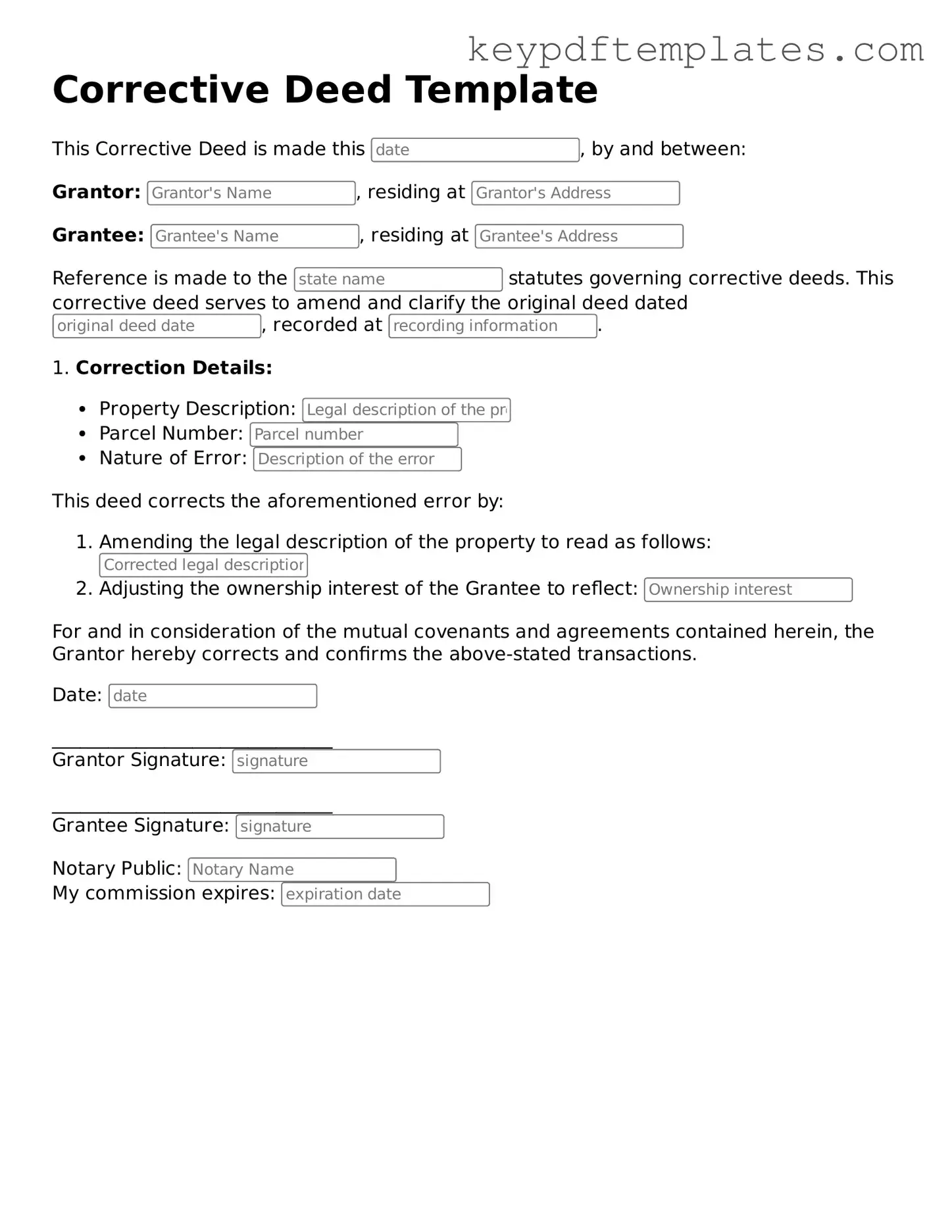Printable Corrective Deed Template
A Corrective Deed is a legal document used to correct errors or omissions in a previously recorded deed. This form ensures that property records accurately reflect the true intentions of the parties involved. By addressing mistakes, a Corrective Deed helps maintain clear title and ownership rights.
Modify Document Online
